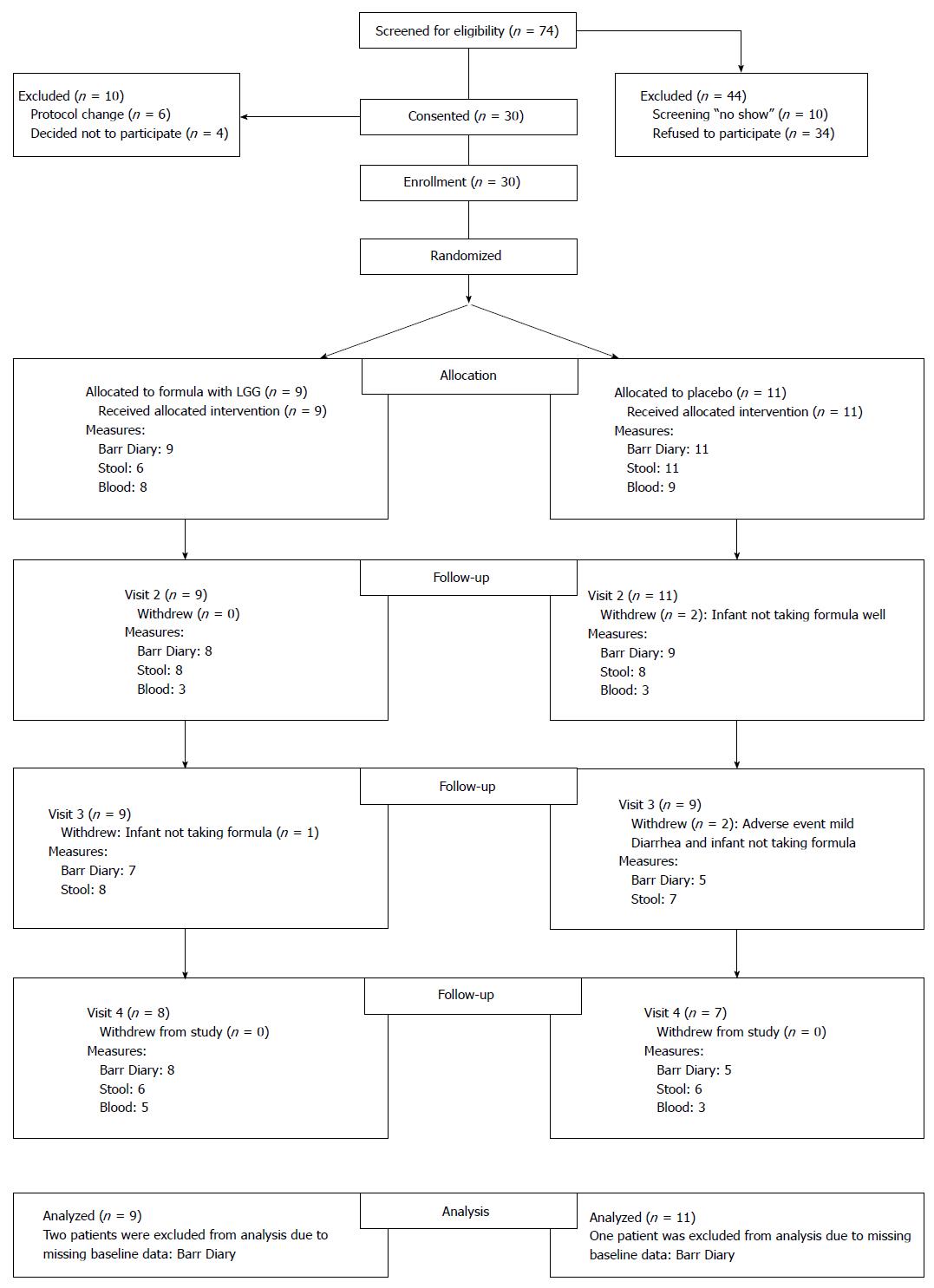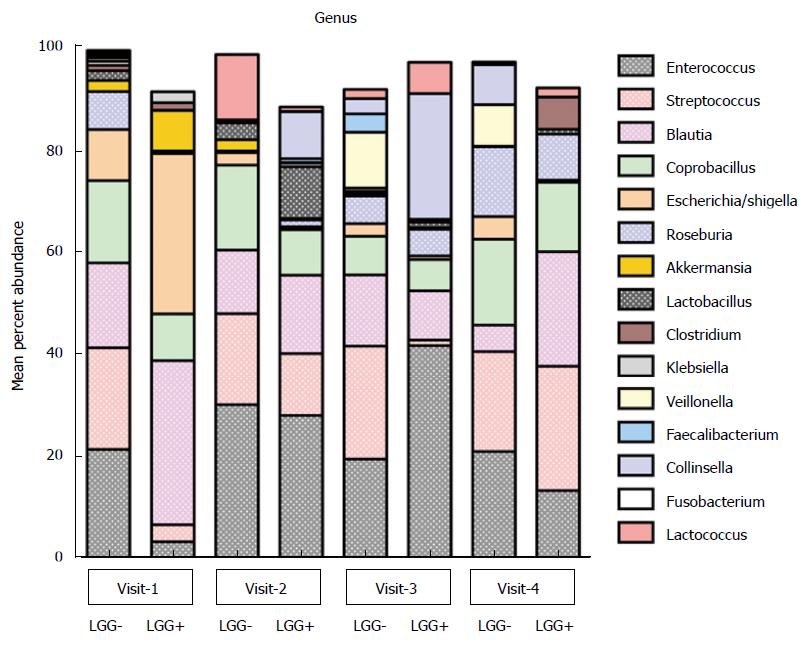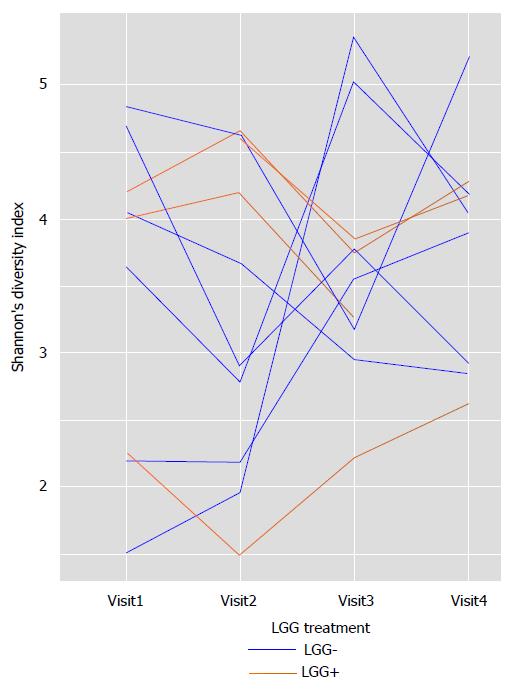Copyright
©The Author(s) 2016.
World J Gastrointest Pathophysiol. Feb 15, 2016; 7(1): 160-170
Published online Feb 15, 2016. doi: 10.4291/wjgp.v7.i1.160
Published online Feb 15, 2016. doi: 10.4291/wjgp.v7.i1.160
Figure 1 Participant flow diagram.
Figure 2 Fecal microbiota of infants with colic before and after treatment with Lactobacillus rhamnosus GG vs placebo.
Average percent abundance of major bacterial groups at the genus level in colicky infants treated with LGG [LGG (+), n = 3] or placebo [LGG(-), n = 6]. Note that this was the subset of infants that had stools available for analysis at each of the 4 clinic visits. Visit 1 (day 1); visit 2 (day 14); visit 3 (day 42); and visit 4 (day 90). LGG: Lactobacillus rhamnosus GG.
Figure 3 Abundance of Lactobacillus rhamnosus and shifts in composition of stool specimens.
A: Lactobacillus rhamnosus 16S rDNA sequence abundance in colicky infants at baseline and 14, 42 and 90 d after treatment with LGG (visits 2, 3 and 4). The median, 25th-75th percentiles (boxes) and 10th-90th percentiles (whiskers) are represented. Black dots represent outliers. aP < 0.05 compared to baseline and all other visits, respectively; B: Twins’ bacterial distribution at genus level. The abundance of major bacterial genera in stools of twin infants with colic: baseline (visit 1) and 14, 42 and 90 d after assignment to formula +/- LGG (visits 2, 3 and 4). Only one stool sample was evaluable at visit 1. The percent of abundance of Lactobacillus was indicated as orange box which was increased in LGG+ compared to LGG- at visit 2 (P < 0.05). LGG: Lactobacillus rhamnosus GG.
Figure 4 Shannon’s diversity of stool samples, measured over time.
LGG- infants’ stools are shown in blue and LGG+ infants’ stool results are shown in orange. Results are shown only for the patients for whom stools were available at each clinic visit. For two patients in the LGG+ group, one of the visits did not yield sequencing results. Note wide fluctuation at the various time points in infants in both groups. LGG: Lactobacillus rhamnosus GG.
- Citation: Fatheree NY, Liu Y, Ferris M, Van Arsdall M, McMurtry V, Zozaya M, Cai C, Rahbar MH, Hessabi M, Vu T, Wong C, Min J, Tran DQ, Navarro F, Gleason W, Gonzalez S, Rhoads JM. Hypoallergenic formula with Lactobacillus rhamnosus GG for babies with colic: A pilot study of recruitment, retention, and fecal biomarkers. World J Gastrointest Pathophysiol 2016; 7(1): 160-170
- URL: https://www.wjgnet.com/2150-5330/full/v7/i1/160.htm
- DOI: https://dx.doi.org/10.4291/wjgp.v7.i1.160












